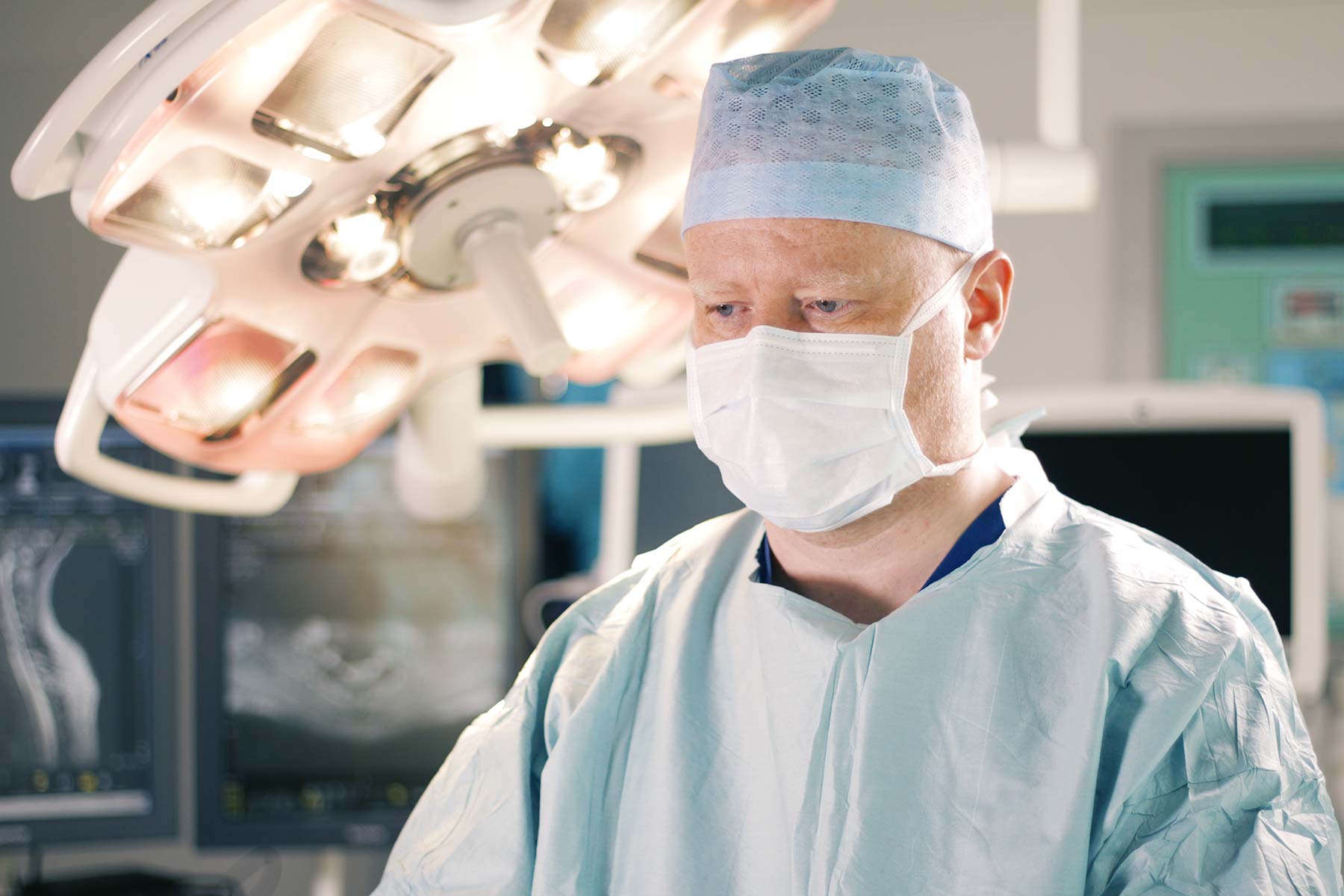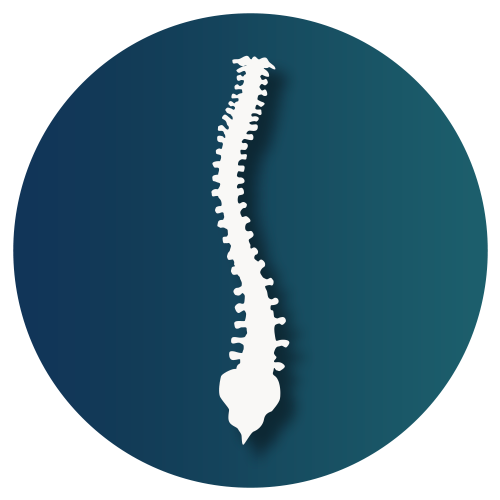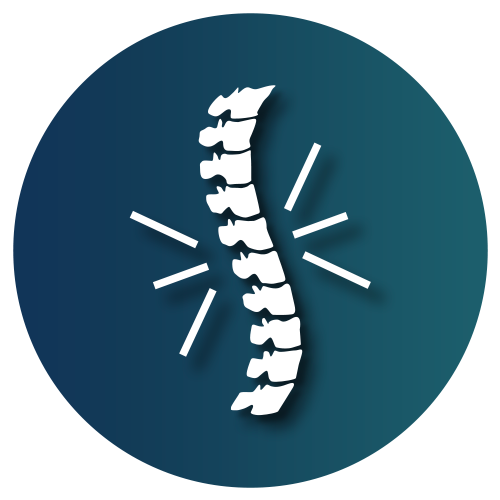Spinal Surgery Specialities
The complex anatomy of the spine and its associated neurological structures (spinal cord and nerve roots) can give rise to a number of conditions that occur as a result of natural ageing and disc degeneration. Often, pain will settle with an appropriate period of rehabilitation without the need for any investigations or intervention. Should symptoms persist, then a detailed history and clinical assessment will direct appropriate investigation and subsequently treatment options can be discussed. Mr McGillion believes in offering a bespoke approach to each patient. As individuals, our symptoms, tolerances and expectations vary so it is vitally important to be fully informed of your treatment options so the most desirable outcome can be achieved.


Degenerative Spine
Degenerative conditions of the spine encompass a variety of problems that predominantly affect the cervical and lumbar spine. This is often referred to as degenerative disc disease. Whilst disc degeneration is a natural phenomenon of the ageing process this can sometimes give rise to pain as a consequence of arthritis in the spine or nerve compression which may present as pain radiating to the arm or leg. Some of the common pathologies are discussed below:
Cervical spine
Cervical Degenerative Disc Disease in one of the most common causes of neck and arm pain. It develops when one or more of the discs in the cervical spine start to compress and break down due to wear and tear. The discomfort can range from mild to severe and debilitating. It can lead to osteoarthritis, with pain and stiffness in the neck.
Lumbar Spine
Degenerative Disc Disease in the Lumbar Spine refers to a syndrome where age-related wear and tear on the spinal disc causes lower back pain. The rubbery discs between the vertebrae (which allow for flexing and bending) act like shock absorbers and in time become worn, therefore no longer offering as much protection as before.
Sacroiliac joint
There are two Sacroiliac Joints in the lower back and they sit on each side of your spine. These joints are uses to support the entire weight of the upper body whilst we are upright, which places a large amount of stress across them. Over time these joints can wear and tear and therefore produce painful symptoms and Osteoarthritis.
Scoliosis in the Adult Spine
Scoliosis is a rotational abnormality of the spine where the spine develops a curvature and can twist on itself. This can occur at any age and can be associated with congenital anomalies in the spine, neuromuscular conditions such as cerebral palsy and other complex syndromes involving multiple organ systems. The most common scoliosis we see is in fact adolescent idiopathic scoliosis where there is no obvious underlying cause although genetics can play a role. Surgery is sometimes required to stop curve progression and improve the overall alignment and balance of the spine as well as its appearance and shape.
With advances in implant technology and surgical techniques there has been an increase in the number of adult patients having complex spinal surgery. These individuals may have had scoliosis diagnosed in childhood when scoliosis surgery was perhaps not available or may have developed arthritis in their spine that has become so severe that it causes painful scoliosis and in some cases compression of the spinal cord or spinal nerves. Surgery in this patient group can be life changing however it can be very challenging. Often it involves complex surgical techniques and prolonged rehabilitation and it is not without its risks and potential complication.
Hyperkyphosis
Hyperkyphosis is a condition, typically affecting the thoracic spine, that causes a more rounded appearance of the back when viewed side on. Most cases do not require any operative intervention and indeed can be successfully managed with physiotherapy and core strengthening activity.
One of the commonest causes of hyperkyphosis is Scheuermann’s kyphosis. This results in wedging of some of the thoracic vertebra due to uneven growth and development of the vertebra during adolescence.
Other causes of hyperkyphosis include osteoporotic fractures on the spine and tumours such as myeloma.


Spinal Oncology
Spinal Oncology is the study and treatment of tumours within or surrounding the Spinal cord or Spinal Column. Spinal Tumours can either be Benign or Malignant and depending on which region of the spine they occur will determine the type of treatment offered.
Spinal tumours are referred to in two ways:
Primary Spinal Tumour
A Primary Tumour is a tumour growing at the anatomical site where the tumour progression began which in this instance is the spine.
Secondary Spinal Tumour
Secondary Spinal Tumours describe tumours that have spread from their original starting place (Primary) to the spine. For example, cancer cells may spread from the breast (Primary) to form new tumours in or around the Spine.
Spinal Trauma
Spinal Trauma occurs when the Spinal Cord injures and results in damage to the Vertebrae, Ligaments or Discs of the Spinal Cord/Column. A traumatic spinal cord injury may stem from a sudden traumatic blow to the spine that crushes, dislocated, fractures or compresses one or more of the Spinal Vertebrae.
Spinal Cord Injuries of this kind may result in one or more of the following symptoms:
- Loss or altered feel/sensation which include the ability to feel hot or cold.
- Loss of Movement
- Loss of Bladder Control
- Exaggerated Reflex Activities and Spasms
- Changes in Sexual Function
- Intense Pain
- Difficulty Breathing
Additionally, paralysis from a spinal cord injury may be referred to as:
Tetraplegia. Also known as quadriplegia, this means that your arms, hands, legs and pelvic organs are all affected by your spinal cord injury.
Paraplegia. This paralysis affects all or part of the trunk, legs and pelvic organs.

Spinal Surgery
Mr McGillion is happy to assess your condition and discuss in detail what treatment options are available so you are in a position to make an informed decision about your subsequent care. Further information on scoliosis and kyphosis is available from the British Scoliosis Society and Scoliosis Association UK websites.
